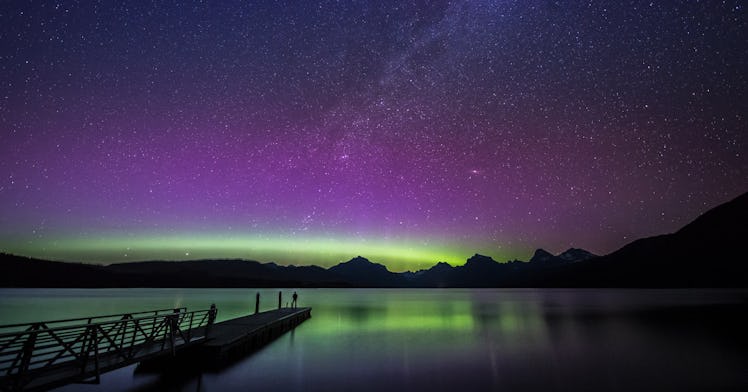Massive Solar Storm Means the Northern Lights Should Be Visible from About Half the U.S. Tonight
It's a rare chance for Americans as far south as Illinois to see the Aurora Borealis.

Update 12/10: Forecasters are now predicting that they could be pushed even further south than initially predicted tonight. The ring is now projected to extend as far south as northern California in the west, the Kansas-Oklahoma border in the midwest, and Virginia in the east. Original story, including why this is happening, below.
While it sounds terrifying, a severe geomagnetic storm that’s coming for the northernmost reaches of the contiguous United States could provide a rare treat for the people who live there: a chance to glimpse the Northern Lights, usually only viewable from the Northernmost parts of the planet.
The Space Weather Prediction Center has issued geomagnetic storm watches for the next three evenings: a minor watch (G1) tonight, a strong watch (G2) tomorrow, and a moderate watch (G3) on Friday. The coming storm is the result of a wave of electromagnetic radiation that erupted from a coronal mass ejection (a solar phenomenon similar to a solar flare) in the direction of the Earth. It will force the aurora ring at the North Pole as far south as parts of northern Illinois and Pennsylvania.
It should be noted that the presence of the Aurora Borealis at this time of year, at this time of day, in this part of the country (but not localized entirely within your kitchen) is a prediction and not a guarantee.
“While SWPC forecasters are fairly confident in CME arrival at Earth, timing and geomagnetic storm intensity are less certain,” the center wrote in its alert.
Still, the chance for folks in Washington, Idaho, Montana, the Dakotas, Minnesota, Wisconsin, Michigan, New York, Vermont, New Hampshire, and Maine to see the Northern Lights out of their windows is a rare one, and we’d highly recommend braving the cold temps to get a better view of one of the natural wonders of the world.
This article was originally published on